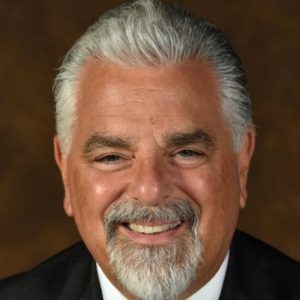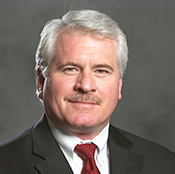The Road Ahead for the Workplace
The COVID-19 pandemic has been called the “great catalyst” for change across the globe—including in the workplace. As companies return to the office, Structure Tone Dublin preconstruction director Richard Hemming spoke with four industry experts on what trends they see coming down the pike.
THE EXPERTS:

Richard Hemming, Preconstruction Director, Structure Tone Dublin

Carl Galioto, President, HOK

Brett Hautop, VP of Workplace Experience, LinkedIn

Ken Kulaga, Construction Director, HCA Healthcare

Bret Nave, Exec. Managing Director, Americas PPG, CBRE
RH: What opportunities has COVID presented for positive change?
CG: This is a tremendous opportunity for change. We’re looking at fundamental changes to organizations as well. Employees have broader interests and broader concerns now. If there is a social issue, they want to know what the firm’s position is on it. It’s now a different kind of workplace.
BN: From a design perspective, there’s a lot of talk about outdoor meeting space, green rooftops, and trying to get people outside. But 80 to 90% of our clients aren’t doing that right now. Memories are short, so it will be interesting to see what comes.
BH: We also need to accommodate on-site events in a way that we haven’t before. This is an opportunity for those people who come in less often to come to the office as a special occasion. And if they do need to just focus work, we have those spaces too.
KK: When it comes to healthcare, what we’re looking at now is how the COVID factor is going to influence design. There are certain things we’ve been able to implement that we know will be a factor, such as upsizing some of our medical gas supply lines, putting large size headers in place because we know that capacity has to increase.
RH: What is the role of technology as we move into the new workplace?
BN: At CBRE, we’ve opened our offices at 50% with the help of Microsoft and our app, Host. Our app helps employees reserve their place for the day, reserve conference rooms, and even order food.
BH: We also had our own app that we’ve evolved since COVID. We have microphones and speakers all over our conference rooms. It’s expensive but it’s the best way to make people feel connected. We’re also looking at adding virtual marker board products to technology-enabled conference rooms. Suddenly we can have a totally different meeting experience.
CG: The productivity and the communication on a design and construction team has improved a great deal. If there is an issue in the field, the super can send a picture and say, “Here, take a look at this.” So that’s a tremendous improvement in terms of efficiency and getting more squeezed into a work day.
KK: COVID dramatically advanced the use of technology in the construction world. Prior to COVID, some of our projects were utilizing BIM 360, but now most of our partners are using it too. It’s getting better, it’s getting more efficient, it’s getting more user-friendly.
RH: What about sustainability?
KK: We’re going to start seeing carbon neutral goals not just in how we put a building together, but in the footprint of the materials themselves. We’ll
look at carbon footprints for the steel, the manufacturing of the steel, the concrete itself, what type of mixer we using, so on and so forth.
BN: The carbon neutral discussion is extraordinarily centered around tech. The high-tech guys are moving the needle on their own without being prompted. At some point, we’re going to have to be able to measure all this but right now there’s no true measurement. Without a true definition, there’s no way to get where we want to go. We’re all going to have to get much more educated.
BH: We’re targeting carbon negative for our next building, and we’ve developed a plan to try to get there. It involves sequestering a bunch of carbon in our concrete, along with a number of other things, and then producing enough energy to run our building ourselves. For us, it’s as much about setting an example and sharing what we’re doing so that anybody else who wants to can learn.
CG: A factor we’re monitoring more internally now has to do with social equity. Are we designing the building based on the origin of the materials, is the community welcoming to this facility and participating in any aspect of the planning of this project, things like that.
RH: What can a construction partner do to improve the overall project process?
CG: Technology is part of it. We have to think as a united AEC industry, delivering a project for a client. Embracing the technology, making quick decisions using the technology—these are the things we need to keep.
BN: Big data is going to drive decisions. If you’re keeping this big data, you can give your clients all kinds of benchmarking standards. Our clients are constantly asking us for pricing hypotheticals. Having trusted general contractors providing us with that information, that’s where I’d love to see us go in the future.
KK: You cannot replace the relationship factor and the trust that you have to have in each other. The contractor is an extension of me, and you’re just never going to replace that.
